Genre: Shmup Developer: Kaneko Publisher: Toho Players: 1 Released: 1990
The first two years of the Genesis’ life was filled with a seemingly never-ending barrage of space shooters. Companies just about came out of the woodwork to release them, leaving many gamers to rely on the scant few screen shots on the game boxes to determine quality. Who had ever really heard of Dreamworks or Seismic before? How about Treco? It was almost like people were founding companies just to make shooters for the Genesis.
In contrast there were some games that were published by companies that appeared to have no visual connection to the genre. For example, after having played Insector X in the arcade, I was baffled by the fact that it was Sage’s Creation who released it and not Taito. Ah, the days before we knew of licensing agreements… In the end though, we were glad to see these games released, whoever it was behind the publishing wheel, and we had little clue of all those titles left in Japan, aside from what magazines like Electronic Gaming Monthly and Mega Play would show us.
Heavy Unit is a game that marries both the weird publisher factor and the odd import release. Developed by Kaneko (who we all know from DJ Boy), it was published by Toho. Yes, the same Toho of Godzilla fame. Not that seeing Toho publishing video games would be an odd thing. After all, it did release several Godzilla titles across the NES and Game Boy. No, what made this so strange was that it was a game that was totally devoid of large reptiles and space monsters. This was an actual shooter.
Monster maker madness aside, Kaneko is the company that should be under scrutiny here. With Genesis shooter releases reaching a fever pitch in America, why did it decide to pass on Heavy Unit? The most obvious answer was the glut of shooters released on the Genesis early on, and perhaps Kaneko decided that it would be unable to compete with better-known games for the consumers’ hard-earned dollars. The other possibility is that the game simply wasn’t anything special. The coin-op version was pretty obscure and middle-of-the-road, and the Mega Drive port features few enhancements – at least too few to warrant the “special” subtitle. Given this background, one starts to see why Kaneko decided to leave it behind.
Heavy Unit’s major selling point is the ability to transform the player’s ship into a robot, much like Capcom’s Side Arms. But unlike that arcade classic, the robot here neither looks exceptionally cool nor does it play exceptionally well. In some cases, it’s actually detrimental to even use the robot, as confined spaces will result in an excessively difficult time fighting bosses. Why even offer the darn thing if it’s not always beneficial? I can see that philosophy working with weapon power-ups, since one has to think ahead as to what weapon will work best against upcoming foes and the boss, but the transformation power is something that should ALWAYS work for the player.
This wouldn’t be so bad on its own, but Heavy Unit also suffers from the dreaded “Space Cow” syndrome. Until players manages to secure that first speed power-up, they are effectively flying a craft that maneuvers like it’s using farts for thrust. Things get much better with the power-up, but upon death, it’s back to the Drifting Dead. Add the fact that the robot form is a pretty large sprite, and it’s a recipe for frustration and many deaths. Big, slow-moving characters are not an ingredient to making shooter soup, and the combination most certainly leaves a bad taste here.
Another problem is the weapon distribution. There’s little variety, and the standard ship can shoot and drop bombs and be powered up to the point of firing in directions. However, change into the robot and the spread of fire narrows to a single beam and a few missiles. These missiles are near useless, since they tend to freak out and just circle aimlessly around power-ups and other things while enemies close in. The robot’s hit box is is especially notable here as well, which makes dodging bullets and suicidal foes much harder than it should be. The only upside to this situation is that players who get to a boss with a fully-powered ship or robot will find many of the battle laughably short and easy. This lack of balance only makes Heavy Unit’s flaws all the more obvious, but at least this one is in the player’s favor.
I can get past all of these minor gripes, but the one issue that really irks me is the double standard that Heavy Unit employs regarding what is and isn’t solid. Players must avoid everything around them, as even scraping against the scenery will result in instant death, even with a shield! Foes, however, have no such restrictions, and they readily move through solid obstacles. This provides little protection to a ship already too slow for its own good. Facing these areas as the robot only increases the challenge.
Heavy Unit’s six stages aren’t really short, and the game seems long enough despite there being so few of them. The visuals are quite nice, with a good use of color and some neat background effects. I would have liked some more parallax, but what’s there gets the job done. The audio rounds out a decent presentation, and while Heavy Unit pales both visually and aurally next to other Genesis shooters from 1990, like Thunder Force III and Gaiares, it’s actually quite attractive in both areas.
It might sound like I’m stomping all over Heavy Unit, and while there are some unforgivable problems, there is actually a solid game for those willing to exercise some patience. Trial and error is the rule of the day here, and there are at least some generous options to make the journey easier. The ship count can be increased to nine, there’s an easy difficulty level, and rapid fire can be activated. There’s even a password system that can add everything from 99 lives to level select.
While I wouldn’t spend a great deal on Heavy Unit, I definitely recommend checking it out. It has its problems, but it tries to overcome its shortcomings with a wide variety of options and a half-decent checkpoint system. If a cheap copy shows up at auction or import store, grab it and give it a try. There are definitely worse shooters on the Genesis.
SCORE: 6 out of 10

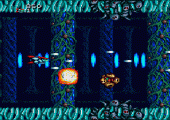
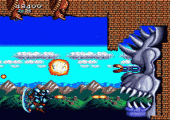
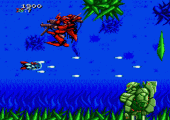
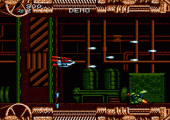
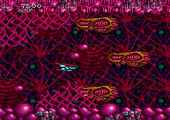
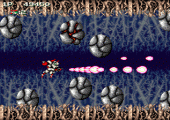
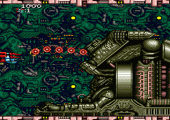
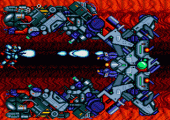
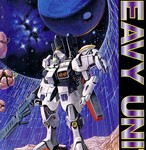
Recent Comments